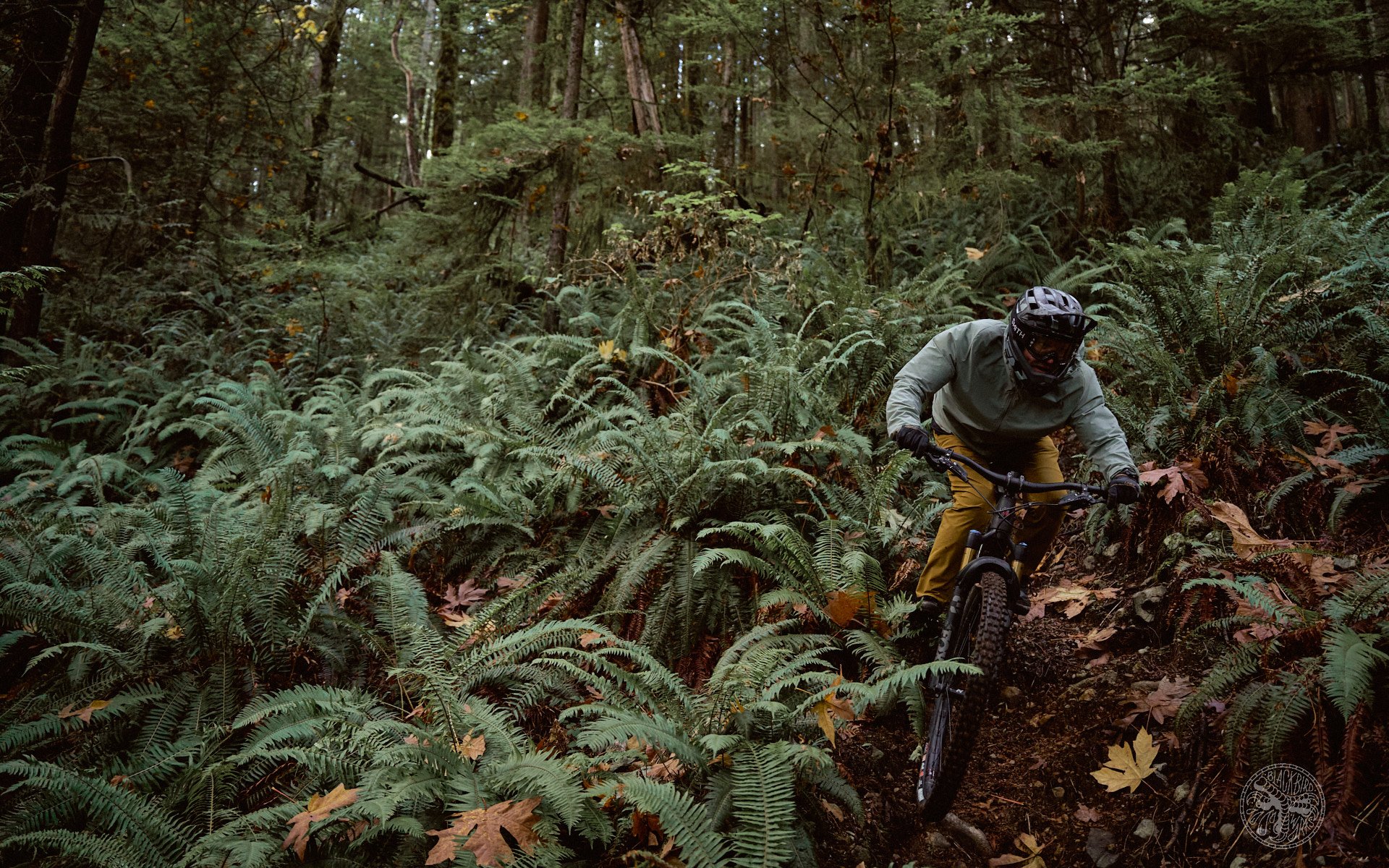
REVIEW
2023 Santa Cruz Nomad Review
The more things change the more they stay the same ... except with the Santa Cruz Nomad. After 17 years the Nomad is on its sixth edition. The latest version, released in August of last year, went through a complete redesign. As I mentioned in my first impressions article, the only thing that didn't change was the size of the back wheel: 27.5" - which adds another mullet bike to the Santa Cruz lineup. In addition to the mullet set up, other changes included lowered anti-squat for increased traction and decreased pedal kickback, in-frame storage, and size-specific chainstays, seat angle, and frame stiffness. Having spent a great deal of time on the Nomad 5 I was excited to ride gen 6 and experience all of the changes. I was not disappointed.
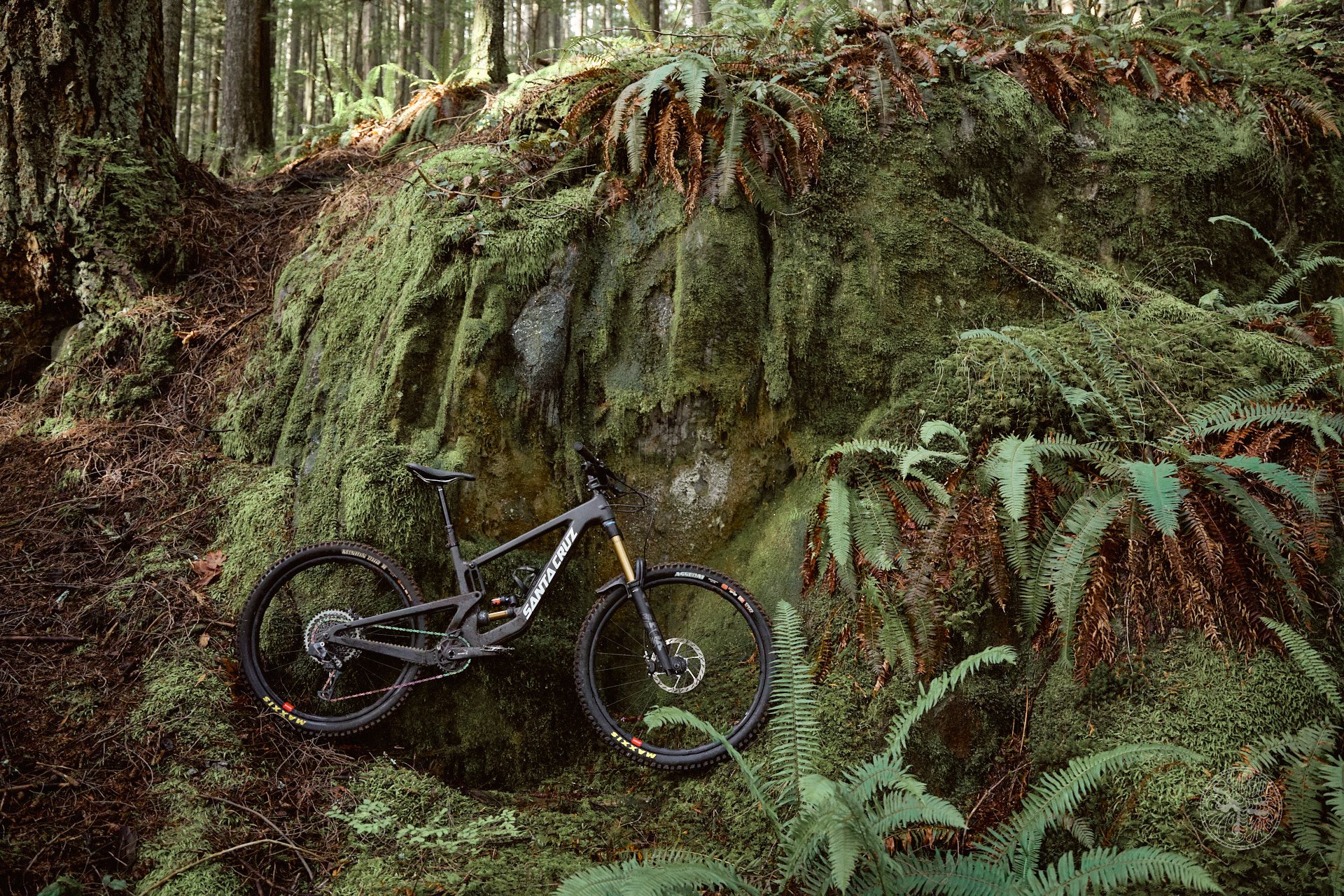
Nomad in its natural environment. It looks like... a Santa Cruz.
I got the Nomad one afternoon during Crankworx. The Santa Cruz guys set up the bike based on their suspension setup chart recommendations, set the tire psi and seat height and voila, the test began. I made a few adjustments of my own: cutting down the Santa Cruz 35 carbon bars from 800 mm to 760 mm, swapped out the WTB Silverado Ti saddle for my favourite, the Specialized Bridge, inserted Tannus inserts and changed some suspension clicks and tweaked air pressures in the fork and shock (outlined below). I transferred the contents from my Enduro's SWAT box into the the tidy glove box purses in the Nomad and I was set. I had the bike for a few months and racked up 43 rides before sending it back.
Let's start with the means (the climb) that lead to the ends we all ride these things for - the descents.
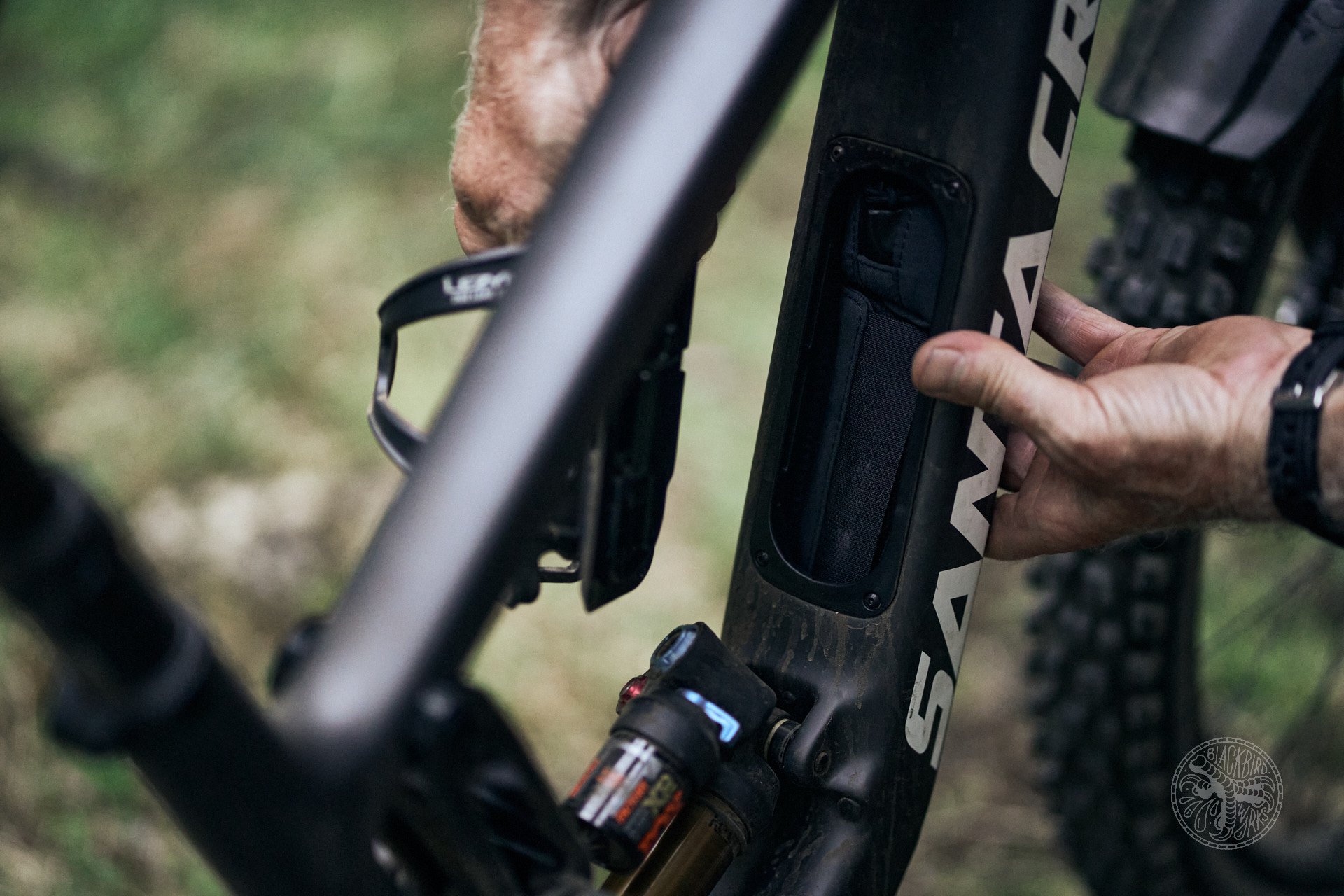
I have loved the in-frame storage feature on past and present Enduros. I took full advantage of the Santa Cruz version on my tester.
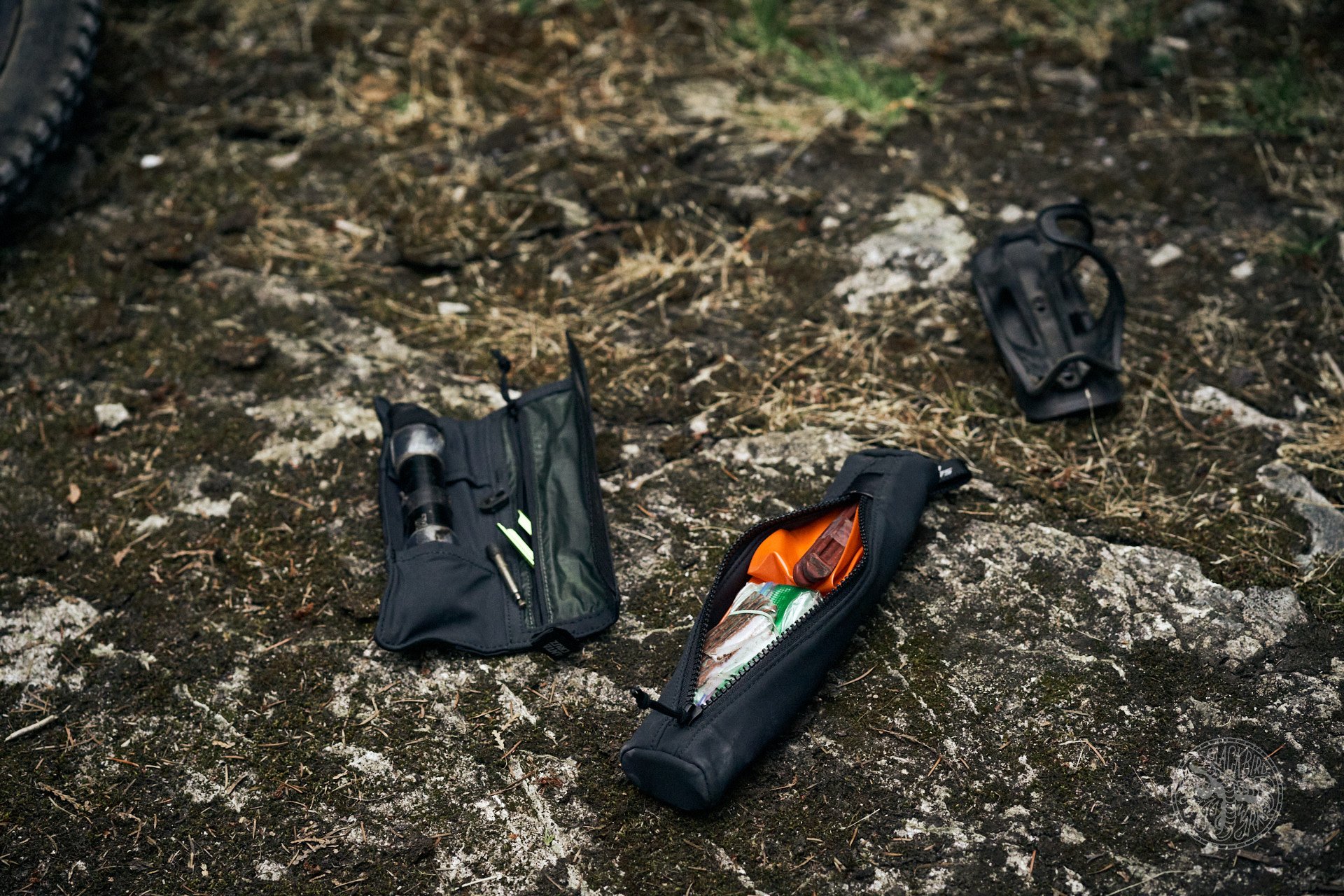
With these "purses" (SC's name) I had all I needed for almost all trailside repairs.
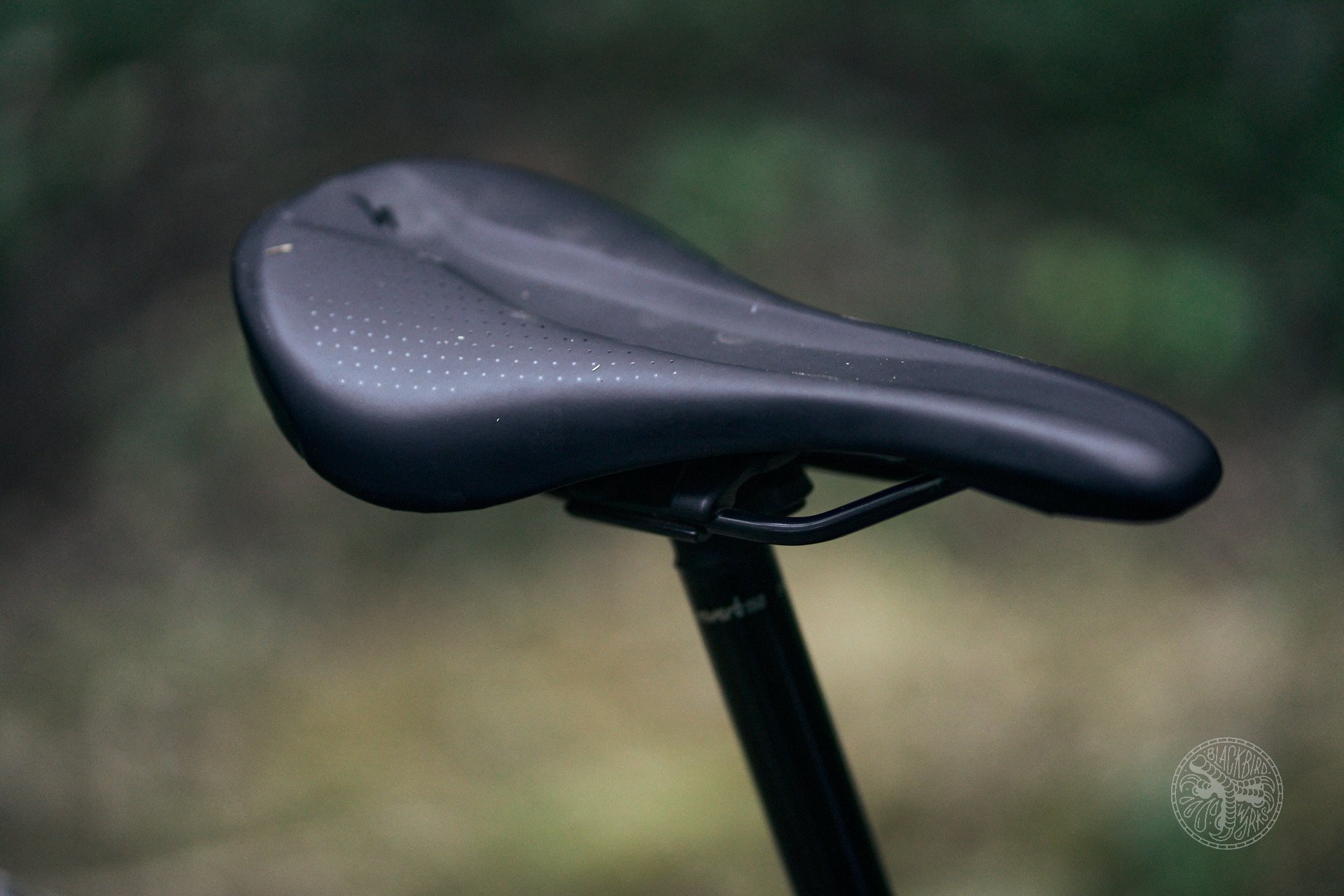
The stock saddle is the WTB Silverado (medium width, Ti rails) but I prefer the Specialized Bridge to any other.
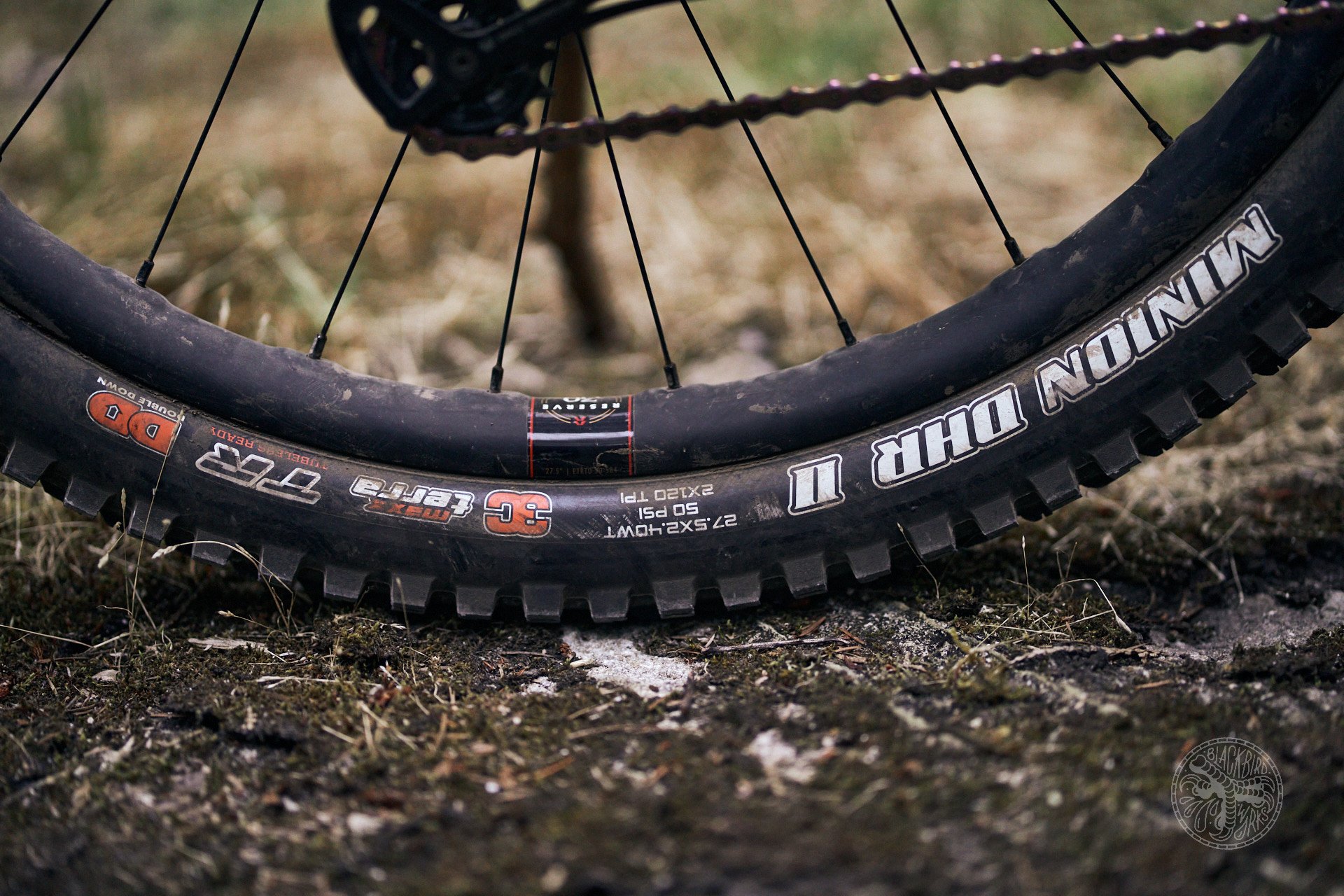
DD pre-insert and warp. The replacement lasted for over 30 rides during the remainder of the test.
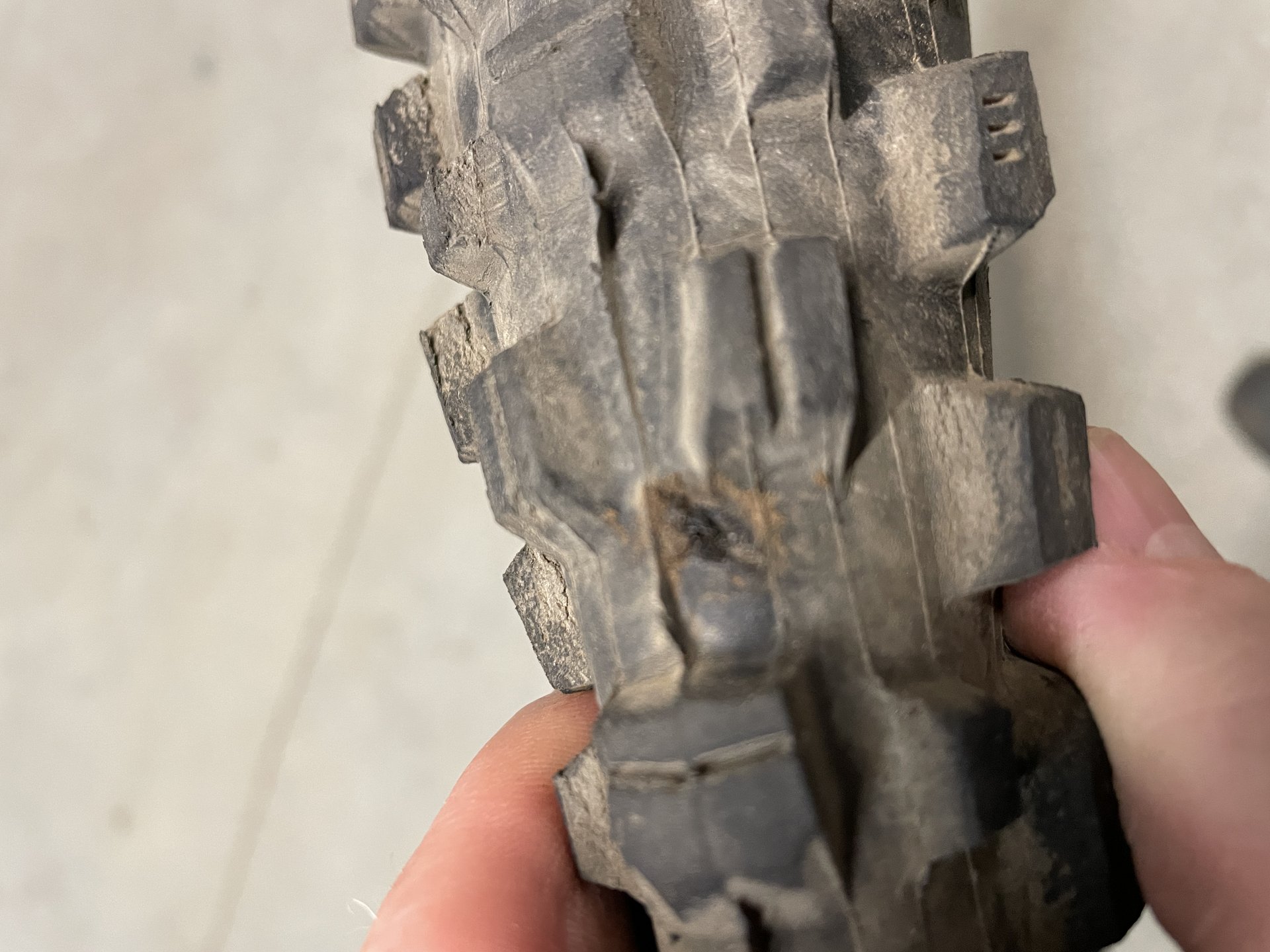
I tend to puncture Exo and Exo+ sidewalls and the occasional tread area. This hole was too big to plug. Steed Cycles ended up replacing it with a freshie which lasted until I gave the bike back.
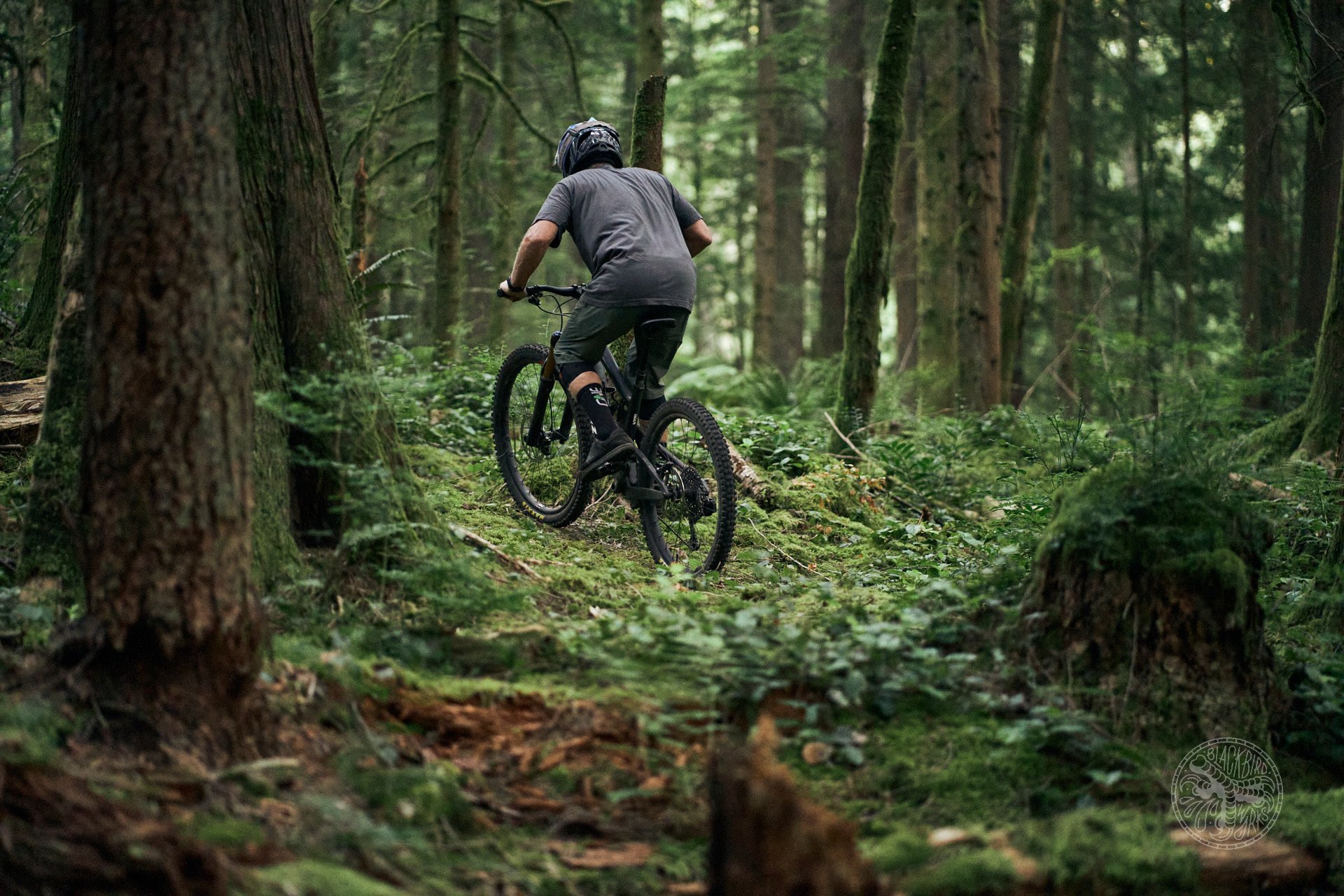
Not a bad climber for a 170mm DH-like bike...but not a great one either.
Climbing
Before adding pedals and inserts I weighed the bike at 33.3 pounds. At that weight and with 170 mm of trail smashing suspension I had no dreams of it being a spry climber. Spoiler: it is not a spry climber.
The Nomad's updated anti-squat helps keep it from bobbing on the climbs. Like most bikes in this category, my medium tester's 1239 mm wheel base, slack (63.8º) head angle, and steep (77.4º) seat angle create generous traction on steep, technical climbs. I found that if I left the Fox X2's compression open, my traction increased but so too did the increase in BB strikes and the feeling that I was going slower than my normal slow pace. Because of that, I kept it closed on most tech climbs and all fire roads, gravel and paved climbs. Even with the X2 closed the Nomad's uphill traction was excellent.
It may have been my mind playing tricks on my cardio but I felt like I was climbing more slowly than on other bikes I have pedaled lately (Enduro, Hightower, Yeti SB 150). I noticed the same thing when I mulleted my Enduro - the smaller back wheel was slightly slower. I have not done back to back timed runs but the smaller wheel feels like it contributes to a slightly slower climb than a 29r rear wheel. The smaller rear wheel is more easily influenced by trail imperfections like dips, holes and log rollovers. Whether it was a significant difference in climbing speed isn't as important as the fact that it could be used as a semi-passable excuse on group rides. Not that I verbalized it (wait, I just kinda did) because we know what happens if you speak your excuse truth to a crew of mountain bikers...
Regardless of the 27.5" wheel, the Nomad 6 is a decent climber for an enduro bike. I never felt weighed down, dragging nor wanting to blame the bike for my climbing speed and effort. The bike easily climbed steep switchbacks, holding a firm line. Now, like all climbs, that's out of the way and we can move onto the fun.
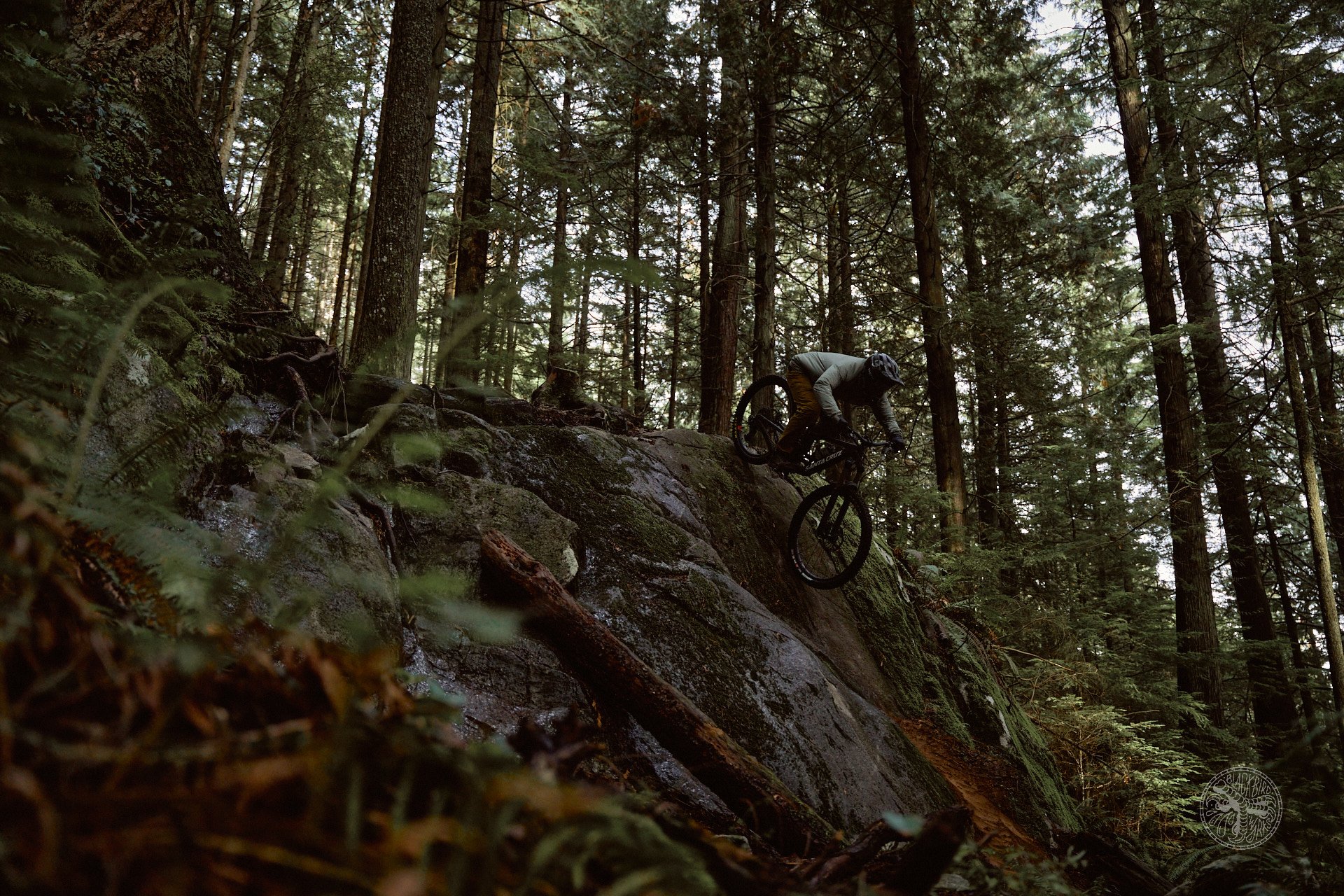
I had a few moments where I was almost bucked off the bike on steep exit hits while riding three of my usual steep rolls to slightly harsh exits. After speeding up the rebound the bucking went away.
Downing
In my first impressions article I liked the bike after 14 rides but I wanted to play with the suspension settings to soften the bumps and reduce the small but noticeable trail feedback I felt through hands and forearms. I expected the stiff frame, with its beefy counter-rotating links designed to reduce lateral flex, would give some trail feedback. Having ridden Reserve 30 carbon wheels I also expected some extra feedback from these strong stiff wheels. I was never thrown off my line but I wanted to see how plush I could make this bike ride. I made a small change to the suspension settings that Santa Cruz recommended for my size and model. Opening up the high speed compression, speeding up the rebound and reducing the fork's air pressure all contributed to a much smoother ride at high speeds (the numbers are outlined below).
The Nomad 6 excels on the chunky, rooty trails. Regardless of the grade, the bike eats everything up. I felt like I was able to hit these lines with confidence knowing the Nomad would stay on track and grind through the messes. After the suspension tweaks the bike still gave a small amount of trail feedback but it was the right level of responsiveness that I could still carve and hold a line, pop off mini hits and try to keep my fast riding buddies in sight.
The 29" front wheel gives this Nomad the ability to push through trail depressions and over bigger roots and rocks. The 27.5" rear wheel gives me that mullet feeling: pushing into and out of corners with more control and speed than I get on 29ers and keeping the rubber from buzzing my buzz - that smaller wheel may have felt a bit slow while pedaling, but not when descending. The Nomad's stiff chassis helps the bike excel in cornering, holding an edge and exiting with confidence. The medium model fit me perfectly and that definitely has a lot to do with the confidence I felt rolling into corners knowing that my position on the bike was balanced.
One issue I had with the VPP suspension was the exits on steep rocks and rolls. A couple of my usual big moves had me a bit worried because I got bucked off so much that my feet left my pedals and my adrenaline spiked through my roof. I increased my high-speed rebound from 5 to 7 clicks and the bucking went away.
My settings
All damper clicks are measured from fully closed. My settings are listed first, Santa Cruz (SC) recommended setups are included in parentheses.
Fork: Fox 38 Factory
- Air spring: 95 PSI, standard 2 tokens installed. (SC = 97 PSI)
- HSC: 3 (SC: 5)
- LSC: 8 (SC: 10)
- HSR: 4 (SC:4)
- LSR: 5 (SC: 5)
Shock: Fox Float X2 Factory
- Air spring: 205 PSI, (SC: 210)
- HSC: 6 (SC: 8)
- LSC: 11 (SC: 13)
- HSR: 7 (SC: 5)
- LSR: 10 (SC: 9)
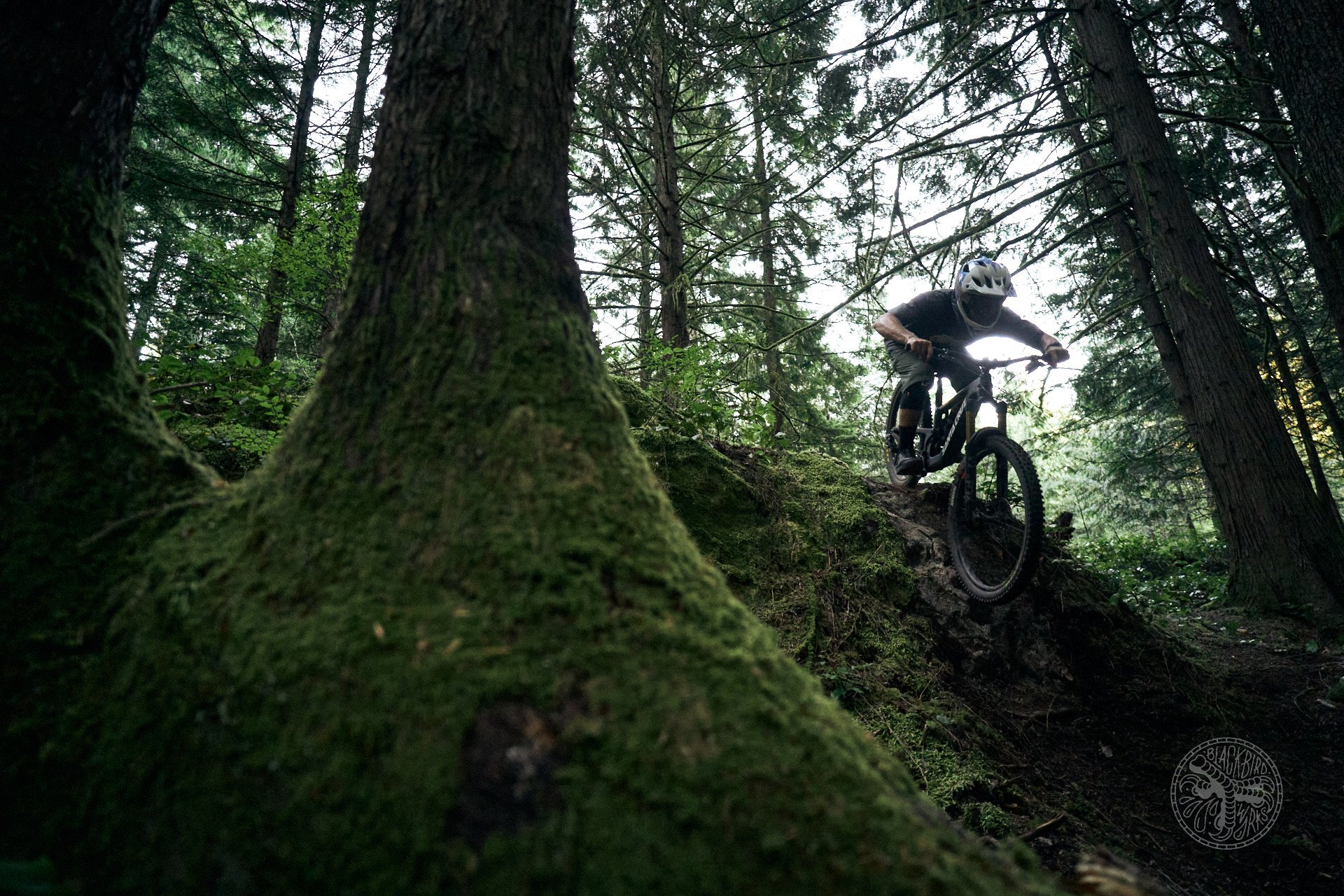
A perfectly composed picture of a composed bike ridden by a de-composing rider.
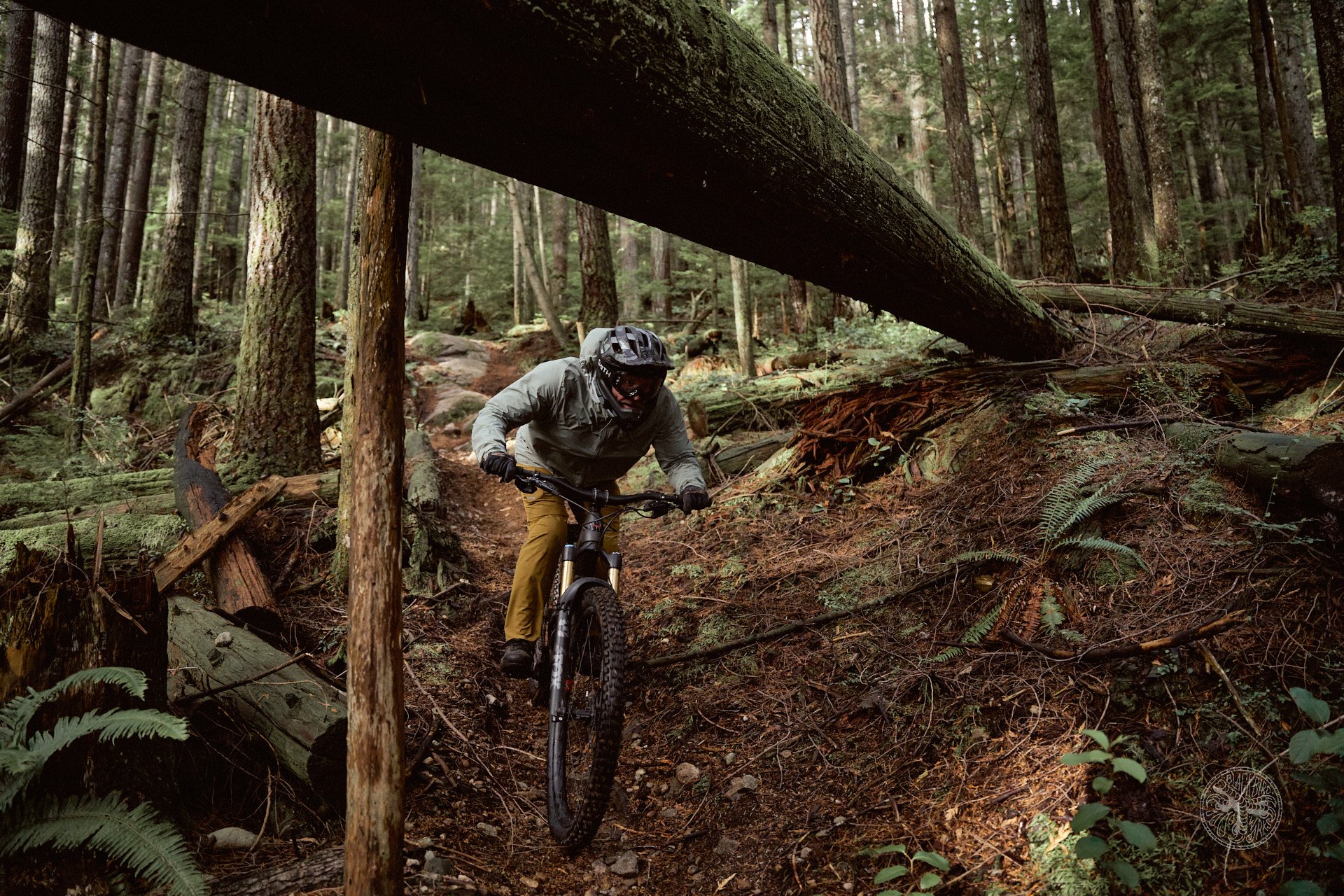
The medium was a great fit for my five niner me.
43 rides later
Before going into the results of all the test riding this bike received, I can say it is in great shape. The frame survived without paint chips, blemishes, cracks or any other issues. All of the parts were left working very well.
The rear tire spec on this model is a Maxxis EXO+ DHRII but my tester came with a DD DHRII. The DD is a good spec for this bike but a funky warp occurred on my tire. Maxxis sent me a new one and our local Santa Cruz LBS, Steed Cycles, installed it; there were no problems for 30 rides after the replacement was installed. I asked Steed if it was my error related to the Tannis insert I had installed - I was told it is a Maxxis problem specific to DoubleDown casing DHRIIs: a problem a couple of my riding buds have also encountered.
The SRAM AXS shifter and derailleur were a treat. My first experience with an electronic AXS shifter and derailleur was positive (see what I did there). I never thought I would like electronic shifting as much as I did. Being able to shift under load, hit multiple shifts in one hold and have the gearing trim of the XO1 AXS's clean, crisp and concise shifting stay the same throughout the test's 43 rides in tough conditions was a wonder. Would I pay 7 or 800 for an upgrade? I doubt it as I think my cheap-o-meter would not allow me, but I can see the appeal for those with the budget.
The best surprise of all the componentry was the Fox Float X2. The shock rode excellently the whole time: no blowouts, no leaking, just great performance. Recent X2s have been prone to durability issues, but mine was problem-free.
The Fox 38 Factory fork ran smoothly and trouble free. Compared to the Fox 38 Factory 180 on my Range VLT and the RockShox Zeb Ultimate 180 on my Enduro, I did not notice the slightly shorter travel. The 170mm version had the stiff, solid feel I am used to with my 38. The new Zeb Ultimate with buttercups is definitely a smoother ride than the 38 but I have always found that to be the case with RockShox compared to Fox.
The Reserve 30 rims stayed true, dent and crack-free.
The Reverb seat post continued to work flawlessly throughout the test period. Since giving back the Nomad I miss the smooth and steady ups and downs of the Reverb compared to my Enduro's OneUp post that I keep meaning to service. I did not need to bleed the Reverb. But let's face it, it's only a matter of time until all of our suspension and parts, both bike and body, are going to need work...it's just how long we can procrastinate from doing the work that matters.
Also in 'the no issues' category were the SRAM Code RSC brakes (I didn't notice any jacking or other issues) and noise (the only thing I could hear were the voices in my head). The SRAM HS2 rotors stayed straight and true.
The only issues I had were with the tire I mentioned above.
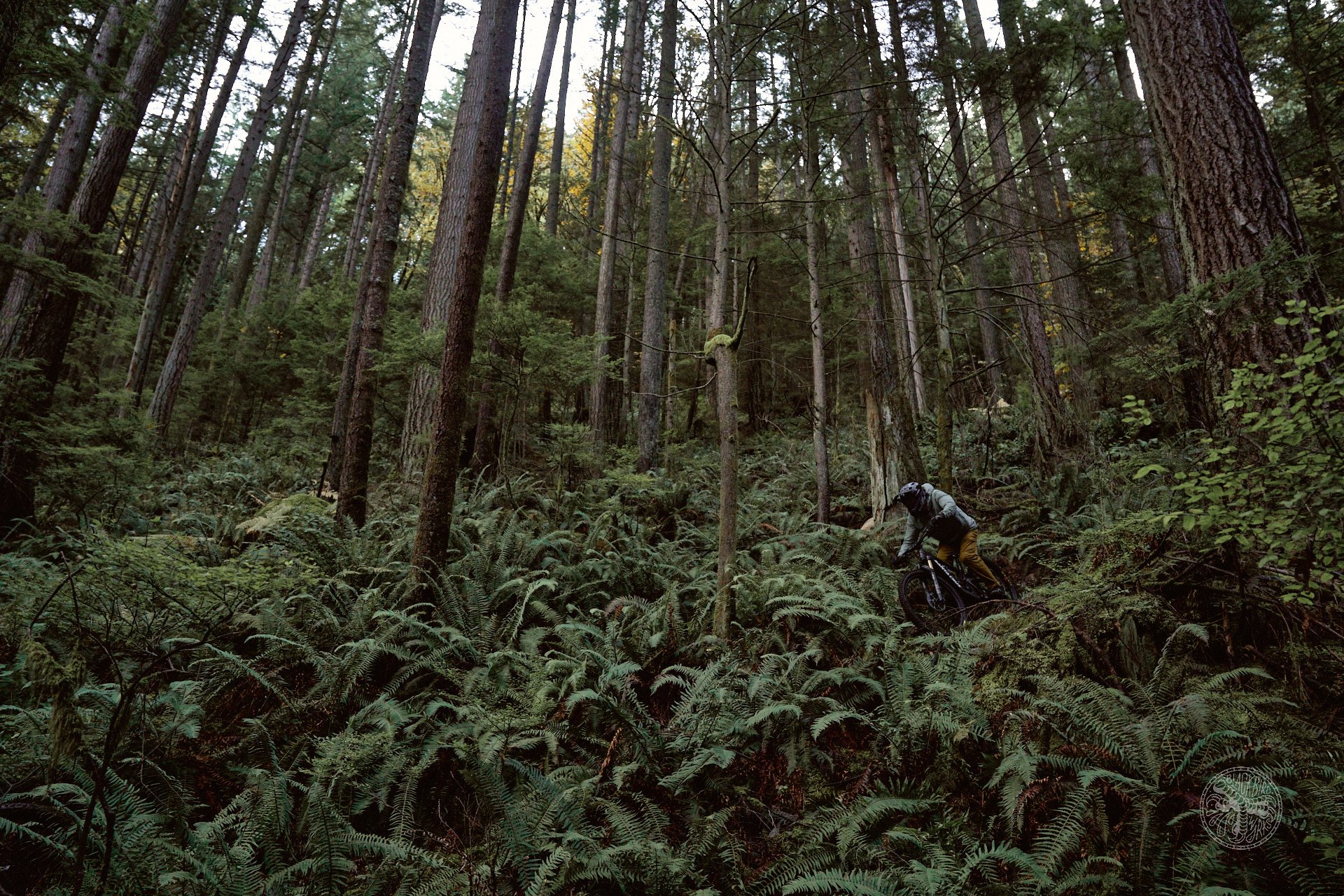
Buried in a sea of ferns the Nomad floated on a layer of lush earth...or, the Nomad tracked side hills and bench cuts real good.
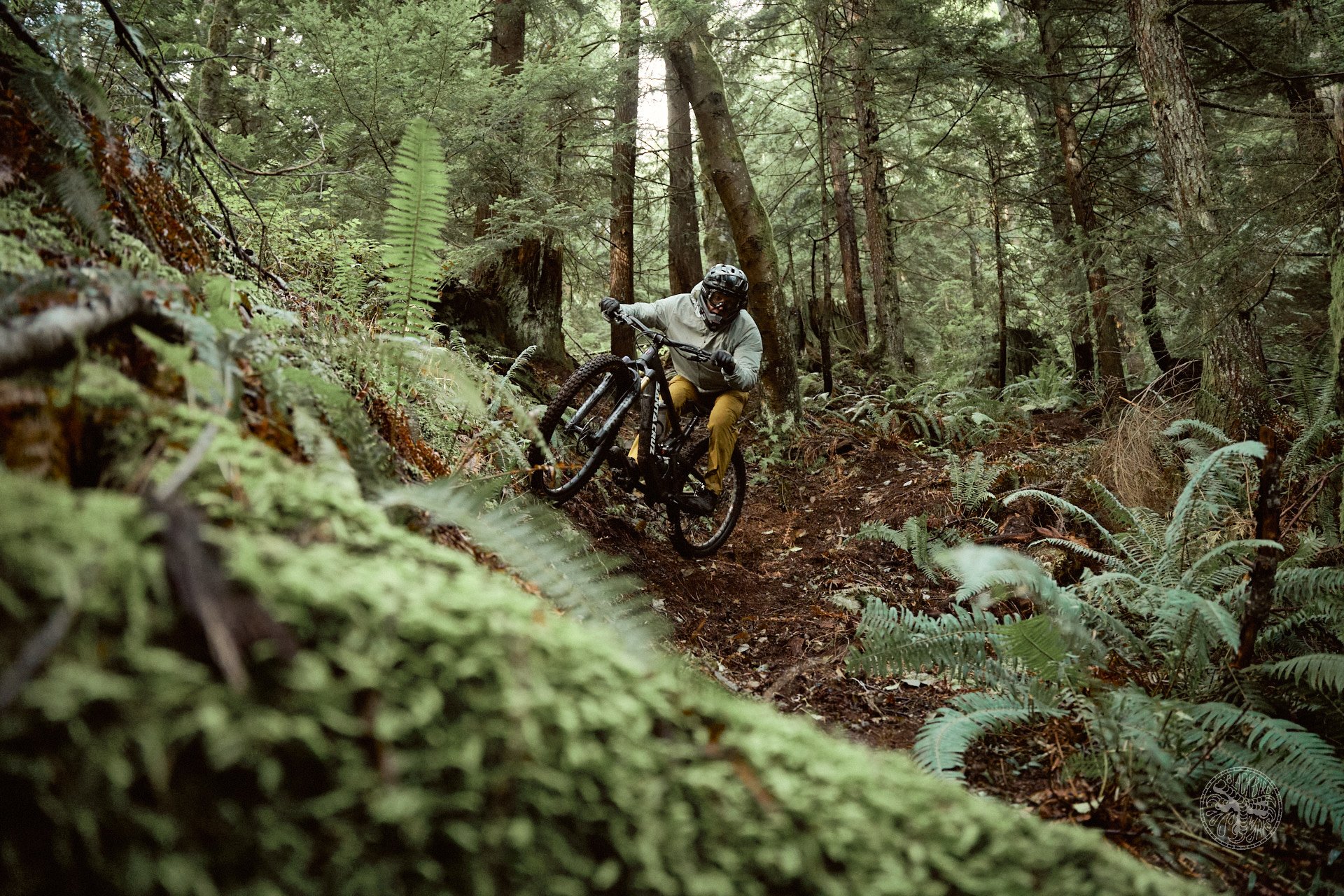
The Nomad carves exceptionally well...if only I could do the same.
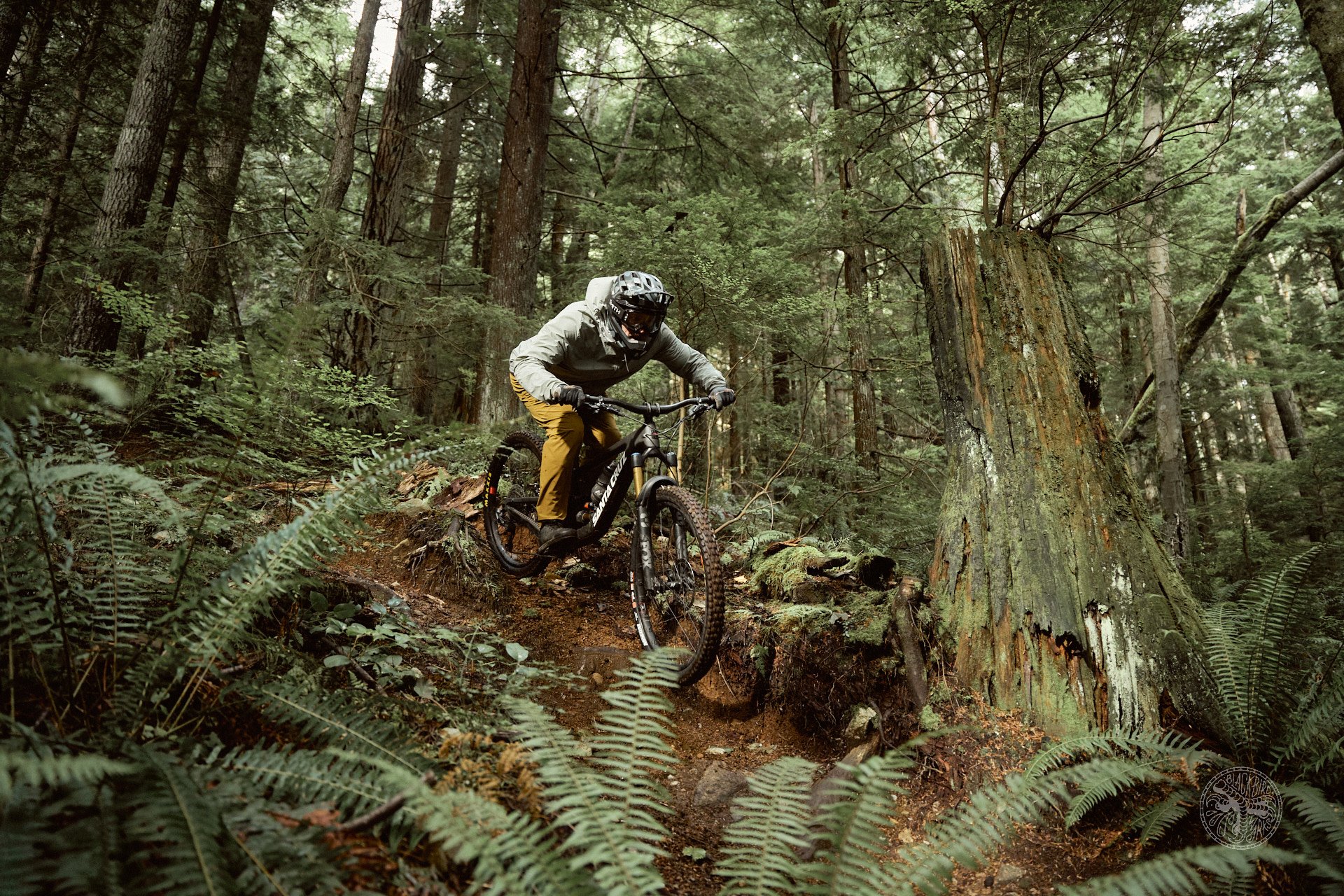
I love Deniz's shot in the lush ferns; so much so, I had to use it again.
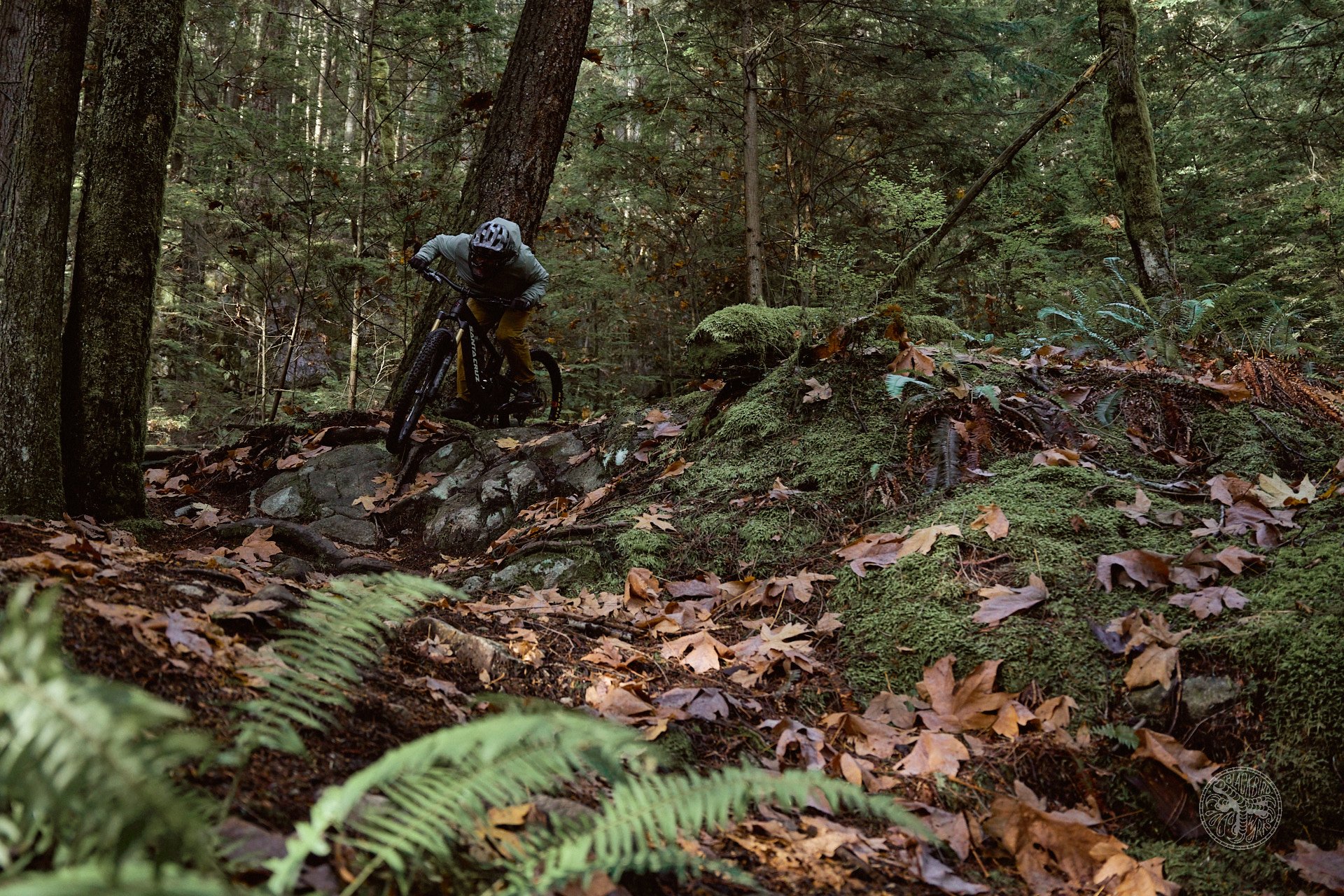
The Nomad handles rolls of all sizes very competently.
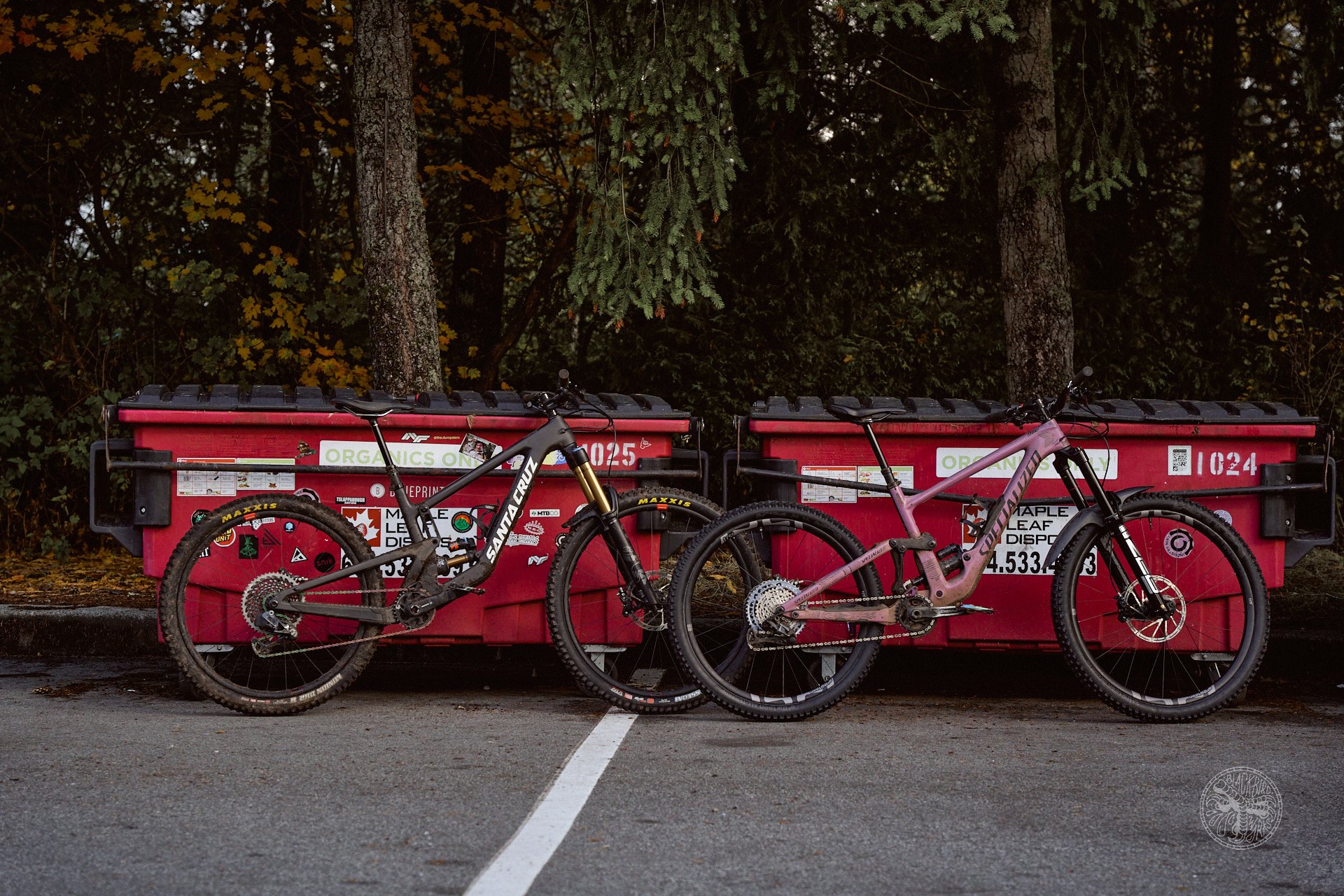
Two similar bikes after a day of back to back testing posing at the home of the infamous post-ride bro-down location: the dumpsters
Comparison
While testing the Nomad I was constantly making comparisons with my daily driver, a 2020 Specialized Enduro configured with a WRP mullet link. Both bikes excel in the high-speed technical chunky stuff, they are playful and poppy which is probably due to the mullet and each bike's suspension platform. They both carve into and out of turns with precision and speed, again perhaps due to the mullet. They handle steeps with control, hold lines on bench cuts and pump rollers fairly well considering the travel they sport. My Enduro is equipped with a fresh RockShox Zeb Ultimate 180 and a SuperDeluxe Select with a MegNeg can. I found that when I did back-to-back tests with both bikes the Enduro was smoother and more supple than the Nomad which is most likely the Zeb with all its newness and the Buttercups and 10 mm of extra travel. Roots, rocks and holes were slightly easier on the wrists and forearms when riding the Enduro on the same trails as the Nomad. Not by much, but enough that it was noticeable.
When comparing the high-end Enduro to my high-end tester, the Enduro S-Works costs more at 15,899 CAD, however, it comes with a Reverb AXS seat post vs the Nomad's Reverb Stealth. The AXS post retails for about 600 CAD more than the Stealth which does not explain why the S-Works is about 1,400 CAD more than the Nomad. At the lower end, the Enduro Comp GX model costs slightly less at 7,300 CAD vs the Nomad R at 7,784 CAD. Regardless of price differences at both ends of the pricing spectrum, on the back-to-back runs and the last 20-ish Enduro rides post-Nomad test, I can say I have a slight preference for the Enduro over the Nomad...but not by much.
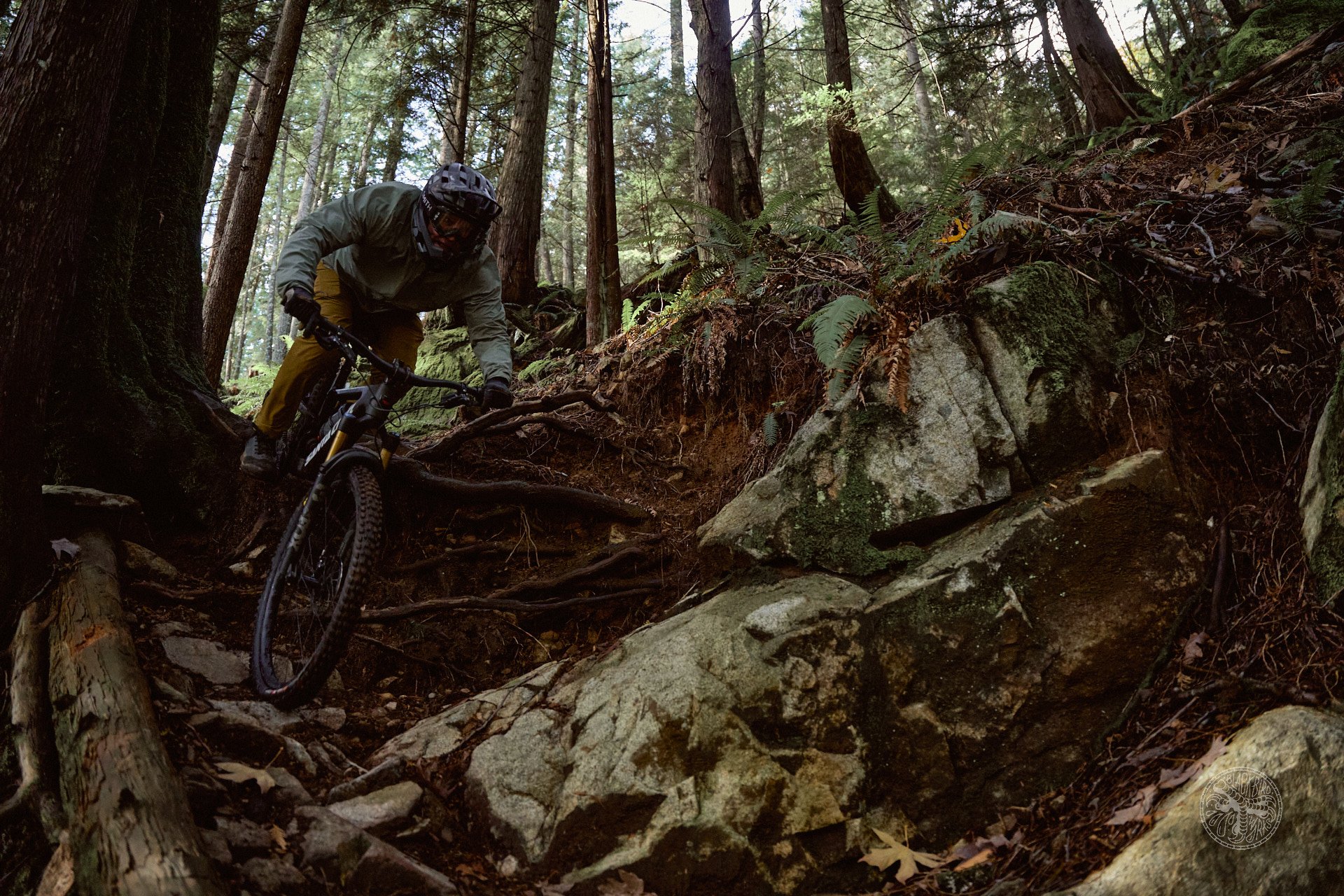
More chunky janky steep gnarl that the Nomad cruised through on the regular.
Conclusion
The Nomad VI handles steeps and high speed chunky trails with excellent control and traction. It carves corners with precision, due in part to the smaller back wheel, VPP suspension and stiff frame. In addition the bike climbs adequately considering its weight and travel.
The latest Nomad handled everything I took it down over the 43 ride test period. It tracked well at speed on all the trails I rode from pumpy flow trails to high speed loamers to steep technical gnarly trails. I felt confident every time I rode the bike. Having tested the Nomad V, I applaud the changes to the Nomad VI. This is an excellent bike that performs exceptionally well on all the trails I love to ride.
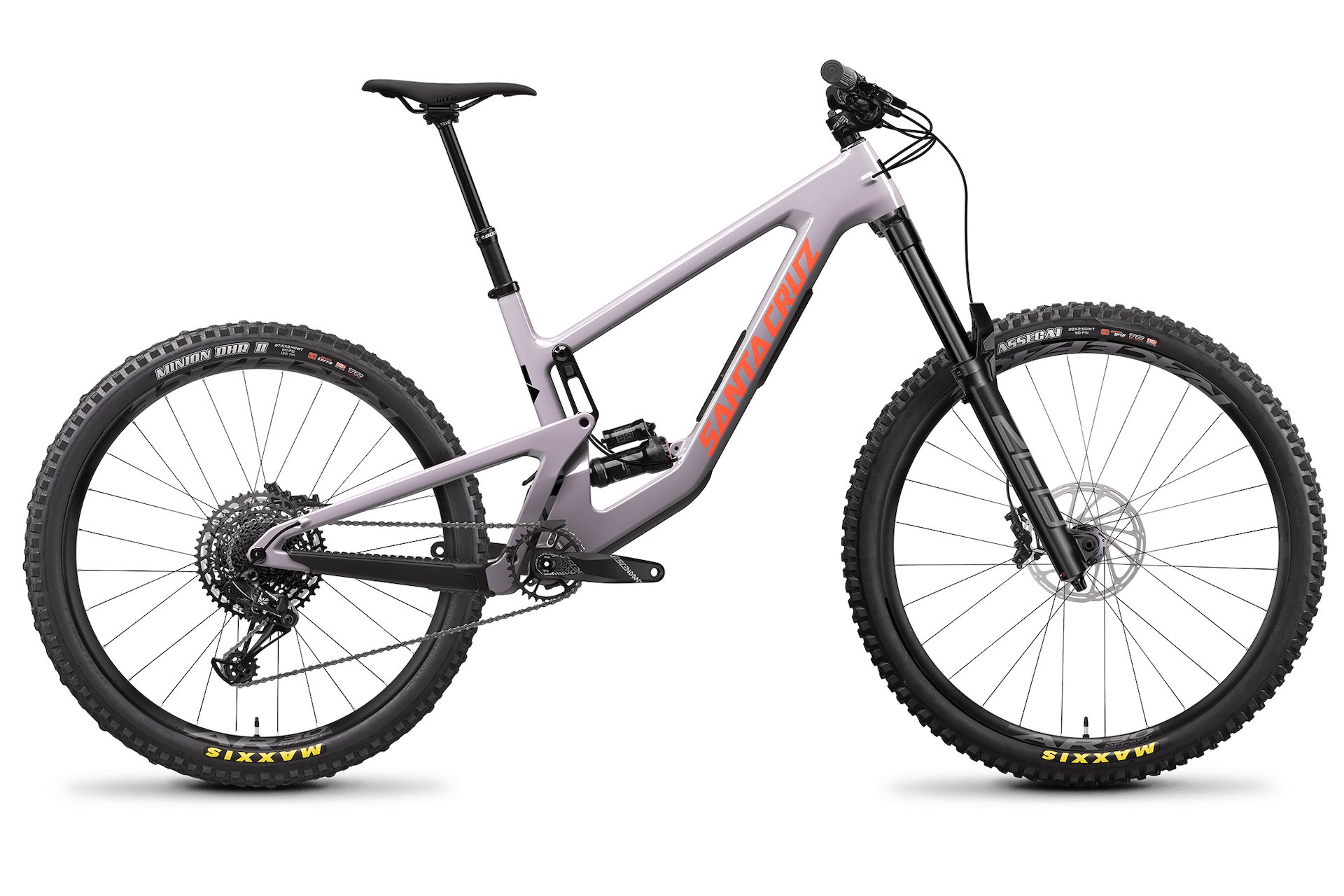
While the Nomad CC frame will set you back 5,749 CAD (4,249 USD), for 7,449 CAD* (5,420 USD) you can get a complete Nomad R with a C (rather than CC) carbon frame, a SRAM NX 12-spd drivetrain, Maxxis rubber, and a RockShox Zeb R fork. And it's only 620 grams (1.37 lbs) heavier than the top of the line model. This isn't cheap obviously, but Santa Cruz doesn't currently produce an aluminum Nomad. *SC has a big sale on now - prices on their site as of March 8 are much lower.
The XO1 RSV model I tested retails for a whopping 14,649 CAD. Admittedly, this is a lot of money for a bicycle. Similar high end models (Trek, Specialized, Rocky, Yeti) in this category are priced similarly.
At the lower end, the Nomad is slightly pricier than most similar enduro bikes but Santa Cruz's lifetime warranty on frames and free bearing replacements coupled with the high quality of the carbon frame and its design might have something to do with that.
The base model Nomad R, with the carbon C frame rather than the Carbon CC, costs 7,784 CAD (5,649 USD) complete. It's no slouch either, with Maxxis Minion rubber, a RockShox Zeb R fork, RaceFace AR rims, a SRAM NX 12x drivetrain, SRAM G2 brakes with 200 mm rotors front and back, and a WTB Silverado saddle.
The Nomad 6 XO1 RSV I tested retails for 14,650 CAD* (11,200 USD) but hey, you are worth it; if not, the base model R lists for 7,450 CAD (5650 USD). * SC has a big sale on now - prices on their site as of March 8 are much lower.
Age - 57
Height - 5'9"
Weight - 175lbs
Ape Index - 0.992
Inseam - 31"
Trail I've been stoked on lately - Bukwus
Bar Width - 780mm
Preferred Reach - 465-480mm
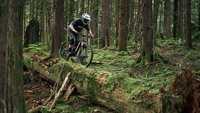
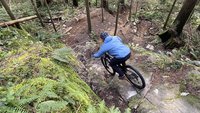
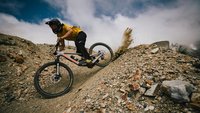







Comments
Mike Wallace
1 year, 1 month ago
Hanging in Enduro territory is actually a pretty good compliment.
Reply
Vincent66
1 year, 1 month ago
Hello, is the location of the steep roller secret ?
Also , I hear a lot of people complaining about the lack of reliability of X2.
Well, actually, you are the first happy person I hear in a very long time. Do you know if fox updated something ?
Reply
MTB_THETOWN
1 year, 1 month ago
My understanding is there was an update. I sent mine in and it's nice and quiet now
Reply
Vincent66
1 year, 1 month ago
Hopefully they fixed it !
My friends in Europe tell me some independant service centers stopped working on X2 because of the never ending problems. These guys in Switzerland explain some of the problems.
X2 still not working
I remember CC had some issues when they first released the "inline" ; they admitted there was a problem and worked hard to provide a durable fix.
Let's hope Fox is ready to do the same !
Reply
Deniz Merdano
1 year, 1 month ago
I've had good luck with my 2022 X2 aswell.
Reply
Trevor Hansen
1 year, 1 month ago
One of many slabs on Cypes. As for the X2 I definitely got lucky compared to the two blown ones I used on my Enduro. I have heard that Enduros are hard on shocks but no issues with my Rock Shox set up…yet.
Reply
Vincent66
1 year, 1 month ago
Thanks !
Reply
JSW07
8 months ago
I am seriously considering this bike…you and i being the nearly identical in Height and weight I’m curious how you found the size medium as your preferred reach is a lot longer than this bike has? Would you consider the large?
Reply
Trevor Hansen
8 months ago
No I would definitely stick to a medium.
Reply
JSW07
8 months ago
Do you like a smaller feeling bike or what is your reasoning for this? Would you be able to dig into that a bit?
Reply
Jerry Willows
1 year, 1 month ago
Cypress is the best! No crowds and always drier.
Reply
Kever
1 year, 1 month ago
👀
Reply
Ryan Walters
1 year, 1 month ago
And they have pizza!
Reply
the prophet
1 year, 1 month ago
The become aerated very easily, often due to issues at the assembly factory and a bad urethane o-ring.
They crack the damper body tube at the eyelet, but this is a trunnion mount issue which is likely why this one survived.
Fox has an updated tube from al7075 (which still cracks), and also a new trunnion side eyelet which has not seen much light of day to confirm it's a fix.
Factory Enduro team mechanics are changing out the damper body/eyelet assembly EVERY 40 HOURS to help prevent breakage. How's that for a service interval. :)
We have had customers go through 4-5 X2's in the span of the warranty period, which is one year. Send it in for warranty, new one breaks, etc until the warranty period is over then they start charging.
Reply
Jerry Willows
1 year, 1 month ago
Probably why there are so many for sale. We sent a man to the moon over 50 yrs ago but can’t fix a shock
Reply
Dyogram
1 year, 1 month ago
This one is my biggest dream now!
Reply
Cr4w
1 year, 1 month ago
This comment has been removed.
CoilAir
1 year, 1 month ago
Does is still have the ludicrous top tube routing for the dropper post?
Reply
HeyBaumeister
1 year, 1 month ago
As a Nomad V5 owner my biggest question is, how do they both compare? Cheers!
Reply
Deniz Merdano
1 year, 1 month ago
Sounds like the idea for the V6 was to reduce anti squat a little for more plush ride. The V5 was probably the best pedalling Nomad but people wanted the V4 kinematics (but not the V4 structural rigidity)
V6 combines the best of V4 and V5
Reply
tdmsurfguy
1 year, 1 month ago
Trevor, great review. I to have a 2020 enduro. Just installed a new 2022 Zeb ultimate (without buttercups). Otto is set up at180. I was going to get the new 170 air shaft to get back to stock. But I may try the 180. What’s been your experience with the 180 so far?
Reply
Jerry Willows
1 year, 1 month ago
I run 180 on my Enduro and it’s not really noticeable. I just run a lil more sag to soak up the small bumps better
Reply
Trevor Hansen
1 year, 1 month ago
Thanks- ya I ride with Jerry and he convinced me to go 180. I feel like a little extra helps me out on the big roll exits and flat drops. Mine is set up by Jerry so I have the same ride feel on the small bumps but maybe that’s the buttercups.
Reply
Andeh
1 year, 1 month ago
I've got a lot fewer rides on my Nomad 6 than Trevor since I just picked it up in February, but my hot take is that this is one of those bikes that has a personality that just eggs you on. It is so incredibly stable and smooth with dialed geometry that begs to be ridden faster, without feeling like you're going too fast. At the same time, it's easy to preload and pop off little features or move around. Mine weighs something like 35.5 lbs with top end parts, but it rides light.
The suspension kinematic feels very refined. It's got enough anti-squat that it will calmly grind up any long seated climb, but not so much that it has a lot of kickback/off the top harshness. On my previous bike I ran an O-chain, but I haven't felt the need whatsoever on the Nomad. It's got enough progression that with coil and a healthy amount of sag (~30% with 450# spring for 170 lb rider) that I don't feel bottom outs.
I bought this frame kind of on faith. I had a Nomad 3 years ago, and a few bikes later, that bike held a special spot in my heart in terms of being a quintessential fun, all mountain bike that I could ride all day and encouraged me to progress my riding. I feel like the 6th edition definitely represents that heritage well.
Reply
TWilly7
3 months ago
Trevor what size Enduro are you on. S3 or S4?
Reply
Cee Cee
1 year, 1 month ago
Decreasing HSC damping contributed to a smoother ride?--no way. Decreasing HSR damping eliminated bucking?--miraculous
Reply
eriksg
1 year, 1 month ago
Not sure why you're putting it that way, but looking at the settings didn't HSC get more, rather than less, damped? Fewer clicks from fully closed, according to the listed settings?
This would compensate for the reduction in air pressure.
Reply
Skooks
1 year, 1 month ago
Why does *decreasing* HSR damping reduce bucking? I would think it has the opposite effect since the shock will extend faster.
Reply
Vernon Anderson
1 year, 1 month ago
Right?
Reply
Please log in to leave a comment.